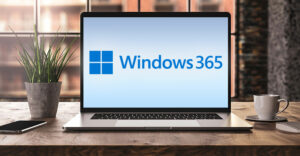IBM launched its newest mainframe, the z13, last week in New York City.
Built for the mobile economy, the z13 can process 2.5 billion transactions daily. It enables real-time encryption on all mobile transactions at scale, and it includes embedded analytics that provide real-time transactions faster and cheaper than the competition, the company said.
The system was designed with input from more than 60 IBM customers.
The launch of the z13 marks another step in IBM’s push into the mobile space, coming on the heels of its team-up with Apple and its purchases last year of several companies in the mobile space.
IBM’s mobile revenue in the third quarter more than doubled year over year.
That quarter was otherwise dismal, with CEO Ginni Rometty expressing disappointment in the company’s performance and IBM abandoning its 2015 road map earnings target of US$20 per share.
Rometty said the company would accelerate IBM’s transformation into strategic growth areas, including security, social and mobile.
“Every time I use a taxi cab and the cabby uses Square to process payment using my credit card, I am reminded of how important mobile is to 21st century commerce and the payments market,” said Dan Shey, a practice director at ABI Research.
By 2019, the number of mobile point-of-sale of devices will increase fivefold to total 51 million units, or 46 percent of the overall POS market, ABI has predicted.
Some z13 Tech Specs
The z13 has 40 percent more capacity than its predecessor, with 141 configurable cores that include combinations of central processors, Integrated Facility for Linux, and z Integrated Information Processors.
It has 320 separate channels of dedicated input/output, the IBM General Parallel File System, up to 10 TB of memory, and better data compression.
IBM will offer z13 customers Collocated Application Pricing and new multiplex pricing.
z13 systems “can be scaled according to the number of processors, memory and other features a given enterprise needs,” said Charles King, principal analyst at Pund-IT.
“IBM’s capacity-based pricing will also make it easier for companies whose compute needs vary seasonally to keep up with demand,” he told the E-Commerce Times.
Data Analysis Capabilities
The z13 extends IBM mainframes’ existing support for Hadoop. With its high processor speed, increased bandwidth, added memory and vector processing analytics, its transaction engine can perform analyses in real time and help prevent fraud on the fly.
“The doubling of encryption speed offered by the z13 should help improve mobile transaction security,” King said, “but that’s an area where I expect to see further developments in the coming 12 to 24 months.”
The z13 gives enterprises a real-time view of a client’s purchasing habits for upselling, cross-promotions and predictive selling.
“Finally, IBM has built IT analytics software specifically for the mainframe,” observed Joe Clabby, president of Clabby Analytics. It has “addressed specific processor and system architectural limits that forestalled the mainframe from becoming a premier analytics processing engine.”
z13 customers won’t have to move data to other systems for analytics processing, Clabby said, reducing hardware, software and management costs, and giving them more-reliable results more quickly.
IBM last week also unveiled a preview of new z/OS software that delivers advanced analytic and data-serving capabilities, letting enterprises further extend mainframe enterprise applications to mobile users.
The Mainframe Market Merry-Go-Round
Expect demand for IBM mainframes to pick up again, Clabby predicted.
Mainframe sales are cyclical, because “when people know a new mainframe is around the corner, they slow down on their purchases. Then it takes off like crazy for a few years,” he told the E-Commerce Times.
“This drives IBM crazy, but customers know if they wait they’ll get more capacity and a break on the software costs,” Clabby said, “and IBM has done it again with the z13.”
























































Social Media
See all Social Media